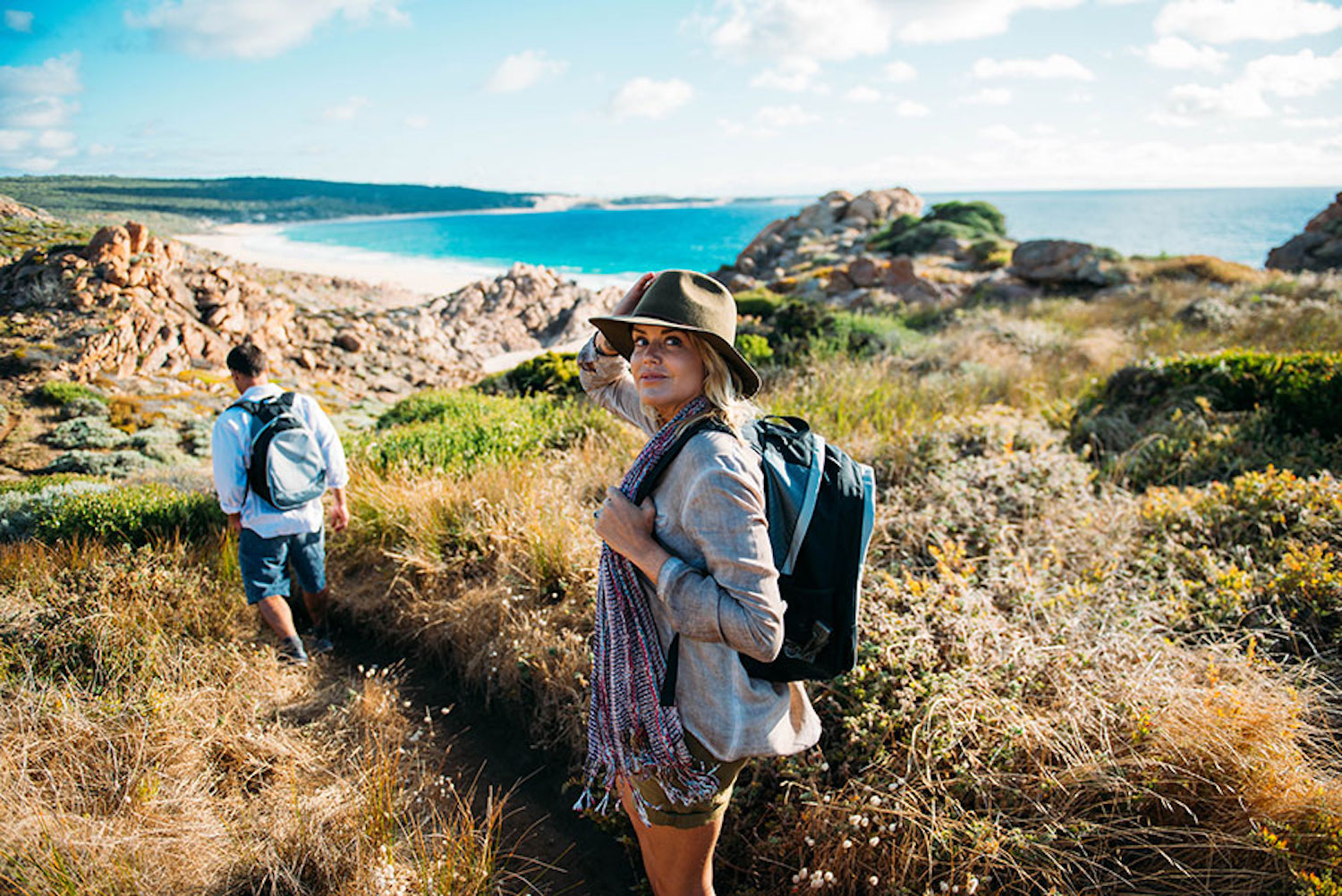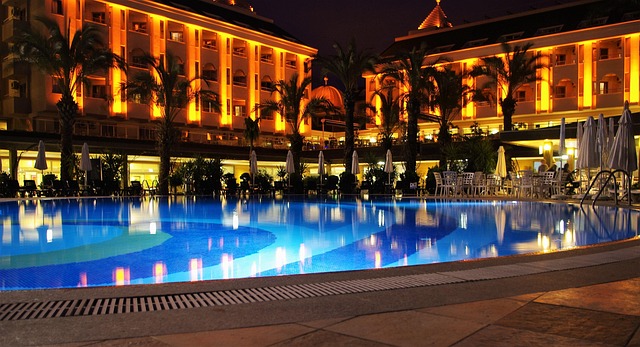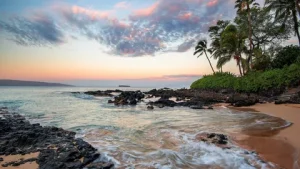Travel & Hospitality
Discover Australia’s Best Wildlife Spots Travel Guide

Australia, a land of diverse landscapes and unique ecosystems, is a haven for nature enthusiasts. From the rugged outback to pristine coastal reefs, ancient rainforests to tranquil wetlands, Australia’s wildlife destinations offer unforgettable experiences. Let’s dive into the top wildlife spots across this stunning continent.
Welcome to Australia’s Wild Side
Australia’s wildlife is as vast and varied as its landscapes. Whether you’re an avid birdwatcher, a marine life enthusiast, or simply love exploring the great outdoors, Australia has something to offer. Here’s why this country is a wildlife paradise.
Wildlife Paradise
Australia is home to an array of unique species found nowhere else on Earth. Its isolation and varied climates have allowed for the evolution of incredible biodiversity. From kangaroos and koalas to the Great Barrier Reef’s marine life, Australia’s wildlife is both iconic and extraordinary.
Exploring the Outback
Rich Aboriginal Culture: Kakadu is not just about wildlife; it’s also a cultural treasure. The park is home to ancient Aboriginal rock art sites, some dating back over 20,000 years. These artworks offer a glimpse into the rich cultural heritage of Australia’s Indigenous people.
Diverse Wildlife: Kakadu’s wetlands and woodlands are teeming with wildlife. Expect to see saltwater crocodiles, wallabies, and a plethora of bird species. The park’s biodiversity is staggering, making it a must-visit for wildlife enthusiasts.

Image by yandex.comj
Uluru-Kata Tjuta National Park
Majestic Rock Formations: Uluru (Ayers Rock) and the Kata Tjuta (the Olgas) are not only geological wonders but also spiritual sites for the Anangu people. The sheer size and beauty of these formations are awe-inspiring.
Unique Flora and Fauna: The park’s desert environment supports unique species adapted to the harsh conditions. Look out for the thorny devil, a fascinating lizard, and various rare plants.
Coastal Wonders
Marine Biodiversity: The Great Barrier Reef is the world’s largest coral reef system, home to thousands of marine species, including colorful corals, fish, and mollusks. Snorkeling or diving here is like entering a vibrant underwater city.
Conservation Efforts: Efforts to protect the reef are crucial. Supporting eco-friendly tourism and participating in conservation activities help ensure this natural wonder remains vibrant for future generations.
Ningaloo Reef
Swimming with Whale Sharks: Ningaloo Reef offers the rare opportunity to swim alongside gentle whale sharks. These magnificent creatures migrate through the reef from March to August, providing an unforgettable experience.
Coral Reefs and Marine Life: Besides whale sharks, Ningaloo boasts stunning coral formations and diverse marine life, including manta rays and turtles. It’s a snorkeler’s and diver’s paradise.
Rainforest Retreats
Ancient Ecosystem: The Daintree Rainforest, one of the oldest rainforests in the world, is a living museum of ancient flora and fauna. Walking through its dense foliage feels like stepping back in time.
Rare Species: The forest is home to many rare and endangered species, such as the cassowary, a large flightless bird, and the elusive tree kangaroo. Each corner of the Daintree is bursting with life.
Lamington National Park
Birdwatcher’s Paradise: Lamington National Park, part of the Gondwana Rainforests, is renowned for its birdlife. The park’s lush forests and waterfalls create the perfect habitat for over 200 bird species, including the striking regent bowerbird.
Scenic Hiking Trails: With extensive walking trails, Lamington offers various routes to explore its natural beauty. From short strolls to challenging hikes, there’s something for everyone.
Island Adventures
Wildlife Encounters: Kangaroo Island is often dubbed ‘Australia’s Galápagos’ due to its abundant wildlife. Visitors can see sea lions basking on the beach, koalas in eucalyptus trees, and, of course, plenty of kangaroos.
Natural Beauty: Beyond wildlife, the island’s rugged coastline, pristine beaches, and bushland provide stunning landscapes to explore.
Tasmania
Endemic Species: Tasmania’s isolation has led to the evolution of unique species like the Tasmanian devil. The island’s varied habitats, from coastal cliffs to alpine areas, support a diverse range of wildlife.
Pristine Wilderness: Tasmania is known for its untouched wilderness. National parks and reserves cover nearly half the island, offering endless opportunities for hiking, camping, and wildlife spotting.
Wetlands and Waterways
Birdlife Spectacle: The wetlands of Kakadu are a haven for birdwatchers. The area attracts millions of birds, particularly during the wet season. Species such as magpie geese and jabiru storks can be spotted here.
Crocodile-Spotting: These wetlands are also prime territory for spotting saltwater crocodiles. Guided tours offer safe viewing opportunities of these ancient reptiles in their natural habitat.
Murray River
Aquatic Fauna: Australia’s longest river, the Murray, supports a rich diversity of aquatic life, including the Murray cod, one of the country’s largest freshwater fish.
River Cruises: Exploring the Murray by boat is a relaxing way to enjoy its natural beauty. River cruises offer a chance to see wildlife and learn about the river’s ecological and cultural significance.

Image by yandex.com
Unique Wildlife Experiences
Penguin Parade: Every evening at dusk, little penguins waddle ashore at Phillip Island. This heartwarming spectacle, known as the Penguin Parade, attracts visitors from around the world.
Koala Conservation: The island is also home to a koala conservation center where you can observe these adorable marsupials up close and learn about efforts to protect them.
Rottnest Island
Meet the Quokkas: Rottnest Island is famous for its friendly quokkas, small marsupials often dubbed ‘the world’s happiest animals.’ These curious creatures are not shy and are known for their photogenic smiles.
Snorkeling Adventures: The island’s clear waters and vibrant marine life make it a fantastic spot for snorkeling. Explore underwater caves, coral reefs, and shipwrecks teeming with marine life.
Conclusion
Australia’s wildlife destinations offer unparalleled opportunities to connect with nature. From the vast outback and ancient rainforests to vibrant coral reefs and unique island ecosystems, the diversity and beauty of Australia’s wildlife are truly spectacular. Pack your bags, grab your camera, and embark on a wildlife adventure of a lifetime.
Lifestyle
Luxury Villas in Sri Lanka: Beachfront Villas & Royalindigovilla

Sri Lanka has become one of the world’s most sought‑after destinations for travelers seeking a blend of culture, natural beauty, and unmatched hospitality. Among the island’s many charms, the rise of luxury villas Sri Lanka has redefined how visitors experience this tropical paradise.
From tranquil jungle retreats to dramatic cliffside estates, these properties deliver privacy, personalized service, and unforgettable ocean views. Among the most desirable options are those clustered along the pristine southern coastline, where white sand beaches meet the Indian Ocean in a stunning display of blue hues.

In the serene bay of Thalpe, a coastal village just minutes from the historic Galle Fort, you will find the epitome of refined island living. The thalpe villa concept has gained attention for offering exclusive stays that feel like a private home rather than a hotel room. These villas are designed for discerning guests who seek bespoke experiences—whether a secluded honeymoon escape, a family vacation, or an extended wellness retreat.
Why Choose Luxury Villas in Sri Lanka?
What sets luxury villas Sri Lanka apart from conventional hotel stays is the degree of flexibility and personalization available to guests. Each villa typically includes dedicated staff such as private chefs, housekeepers, and concierge services, allowing you to tailor every aspect of your trip. Unlike resort settings with fixed schedules, villa living allows you to set your own rhythm—breakfast on the terrace at sunrise, sunset yoga on the lawn, or a candlelit dinner under the stars.
Many of these properties are strategically located as villas by the sea , offering direct beachfront access or elevated panoramas of the ocean. Imagine waking up to the sound of rolling waves, stepping out onto your private deck, and watching fishing boats drift across the horizon. Whether you plan to swim, surf, or simply relax with a book by the water, staying in a villa by the sea places the beach right at your doorstep.
The Allure of Thalpe Villa Experiences
Thalpe’s gentle bay and sheltered waters make it particularly attractive for families and couples alike. A thalpe villa often features contemporary design with local influences—open‑air living spaces, thatched roofs, natural wood finishes, and seamless transitions between indoor and outdoor areas. Many properties also include private pools, landscaped gardens, and comfortable lounges that encourage communal living.
Despite its peaceful ambiance, Thalpe is only a short drive from Galle, allowing guests to explore the UNESCO‑listed Dutch Fort, boutique shops, art galleries, and fine dining establishments. As a result, travelers can enjoy both quiet relaxation and cultural exploration without long journeys.
Spotlight on Royalindigovilla
One standout among the many options is royalindigovilla, a luxury property that exemplifies the best of coastal living in Sri Lanka. This villa captures both elegance and comfort while providing guests with immersive experiences tailored to their preferences.
Royalindigovilla’s architecture embraces local aesthetics and international standards, making it a perfect choice for those who want refined living without sacrificing authentic island character.
Royalindigovilla’s location as one of the premier villas by the sea ensures unrivaled ocean views, spectacular sunsets, and access to soft sandy beach just steps away. The property is designed to accommodate groups of different sizes, whether you are traveling as a couple, a family, or with friends. Interiors are spacious and thoughtfully arranged, with high ceilings, natural light, and décor that reflects Sri Lanka’s vibrant heritage.
What draws many travelers to royalindigovilla is the level of service and attention to detail. Guests often highlight the villa’s private chef, who prepares meals based on your tastes using fresh local ingredients—from seafood caught the same day to tropical fruits harvested at peak ripeness.
Meanwhile, the team takes care of every logistical detail, from airport transfers to excursions to nearby attractions such as whale watching tours, turtle hatcheries, or tea plantation day trips.
Villas by the Sea: A Growing Trend
The appeal of villas by the sea in Sri Lanka goes beyond scenic beauty. Many travelers are now prioritizing privacy, personalized service, and unique living experiences, all of which villas excel at providing. Unlike traditional beachfront hotels, villas maximize space and flexibility. You can host private celebrations, enjoy al fresco dinners on your terrace, or unwind with a deep soak in your infinity pool while overlooking the sea.
Across the south coast—from Hikkaduwa and Unawatuna to Mirissa and Weligama—villas by the sea are transforming the hospitality landscape. These properties cater to diverse guest expectations, whether it’s minimalist modern design, Balinese‑inspired sanctuaries, or grand estates with multiple bedrooms and entertainment areas.
Planning Your Sri Lanka Villa Getaway
When organizing a trip focused on luxury villas Sri Lanka, consider the following tips to make the most of your stay:
-
Timing Matters: Sri Lanka’s southern coast enjoys the best weather from December to April, making it ideal for beach activities and outdoor living.
-
Customize Your Experience: Work with villa staff or a local travel specialist to build an itinerary that reflects your interests—whether that includes surfing lessons, Ayurvedic spa treatments, cultural tours, or culinary classes.
-
Consider Group Travel: Villas like royalindigovilla are perfect for groups and multigenerational travel, offering shared communal spaces alongside private retreats.
-
Ask About In‑Villa Services: Many properties provide in‑house dining, spa therapists, childcare services, photography sessions, and more. Planning these details ahead of time ensures a seamless experience.
-
Respect the Local Culture: Sri Lanka is rich in history and tradition, and incorporating visits to local temples, markets, and villages can deepen your connection to the destination.
Conclusion
Sri Lanka’s coastline has emerged as one of the most compelling destinations for travelers seeking a blend of luxury, serenity, and authenticity. With an increasing selection of luxury villas Sri Lanka, guests can enjoy private, fully serviced accommodations that elevate every moment of their stay.
In particular, a thalpe villa offers a serene base from which to explore the southern shores, while standout properties like royalindigovilla set the standard for refined oceanfront living.
For those who value space, service, and spectacular scenery, choosing one of the many villas by the sea in Sri Lanka is a decision that transforms a holiday into an unforgettable coastal experience.
Costumer Services
Delta Airlines Customer Service: Your Essential Guide

Flying can be exciting, but let’s be real — travel plans don’t always go smooth. Flights get delayed, seats change, bags go missing, or you just need to fix something on your booking. When that happens, having access to solid Delta Airlines customer service makes a big difference. Delta is one of the largest airlines in the world, and they handle millions of customer requests every year through phone, online tools, and airport staff.
This guide breaks down how Delta Airlines customer service works, how to find the Delta Airlines customer service number, how to reach Delta Airlines 24 hour customer service, and tips to speak to a representative without wasting time.

Delta Airlines Customer Service Phone Support
For most travelers, calling is still the fastest way to fix an issue. The main Delta Airlines customer service number in the United States is:
Many people refer to this line DELTA Airlines or Delta Airlines 1800 customer service, and it connects you to reservations, changes, cancellations, and general support.
You can call directly at Delta Airlines using this number for help with:
- New flight bookings
- Flight changes or cancellations
- Seat upgrades and class changes
- Delayed or canceled flights
- General travel questions
This phone line is part of Delta Airlines 24 hour customer service, meaning you can call anytime, day or night.
Delta Airlines 24 Hour Customer Service Availability
One thing Delta does right is accessibility. Because Delta operates flights across the globe, their customer service is open 24 hours a day, 7 days a week. That means even if your flight gets canceled at midnight or early morning, you don’t have to wait until business hours.
If you’re dealing with urgent issues like:
- Missed connections
- Overnight cancellations
- Same-day flight rebooking
- Weather delays
You can rely on Delta Airlines 24 hour customer service to assist. Calling the Delta Airlines customer service call line late at night sometimes even results in shorter wait times, which is a nice bonus.
How to Speak to a Real Person at Delta Airlines
Automated phone systems can be frustrating, especially when you already feel stressed. If your goal is to Delta Airlines speak to representative, there are a few tricks that help.
Here’s what usually works best:
- Dial
- When the automated system starts, say “representative” or “agent” clearly.
- If prompted to press buttons, try pressing 0 multiple times.
- Stay on the line — sometimes it routes you automatically.
Once connected, explain your situation calmly and clearly. Having your confirmation number ready can speed things up alot.
Delta Airlines Customer Service for Baggage Issues
Lost or delayed baggage can ruin a trip fast. Delta offers dedicated support for baggage problems.
Delta Baggage Service Number:
You should contact Delta right away if:
- Your bag didn’t arrive
- Your luggage was damaged
- You received the wrong bag
In many cases, Delta can track your bag and arrange delivery directly to your hotel or home.
Delta Airlines Refund and Cancellation Support
Refunds are one of the most common reasons travelers contact Delta Airlines customer service. Depending on your ticket type, refunds can be automatic or require agent assistance.
For refund-related help, you can call:
Delta Refund Status Line:
Delta representatives can help with:
- Refund eligibility
- Refund processing times
- Credits vs original payment method
- Cancelled or disrupted flights
Keep in mind that refunds don’t always happen instantly. It can take several business days, sometimes longer depending on your bank.
Delta SkyMiles Customer Service
If you’re a frequent flyer, Delta’s SkyMiles program has its own support team.
SkyMiles Customer Service:
You can contact SkyMiles support for:
- Missing miles
- Account access problems
- Award ticket bookings
- Mileage upgrades
Calling the SkyMiles line often gets faster service if your issue is loyalty-related.
Online Delta Airlines Customer Service Options
Not everyone wants to sit on hold. Delta also provides several online support options that work pretty well for non-urgent issues.
Live Chat
Delta offers live chat support through their official website.
Live chat is useful for quick questions like seat assignments, baggage rules, or checking flight status.
Manage My Trips Online
Many tasks don’t even require talking to support. Through Manage My Trips, you can:
- Change or cancel flights
- Select seats
- Add baggage
- Request upgrades
Delta Mobile App Support
The Fly Delta App is another easy way to manage bookings and contact customer service. It gives you real-time updates and access to support features right from your phone.
Airport Customer Service Counters
Sometimes, the best solution is in-person help. Delta has customer service desks at most major airports. These agents can help with:
- Same-day flight changes
- Missed connections
- Standby options
- Baggage claims
If you’re already at the airport, this can be faster than making a Delta Airlines customer service call.
When You Should Call Delta Airlines Customer Service
Calling works best when the issue is complicated or urgent, such as:
- Flights canceled due to weather
- International travel changes
- Medical or special assistance requests
- Multi-city itinerary problems
In these cases, it’s better to call directly at Delta Airlines instead of using automated tools.
Tips to Get Faster Delta Airlines Customer Service
- Call during early morning or late night hours
- Keep your booking number ready
- Use live chat for basic questions
- Be polite but clear with agents
- Double-check self-service options first
A little prep can save a lot of time, especially during peak travel seasons.
Entertainment
My Unforgettable Maui Vacation: A Journey Through Paradise

Hi, I’m James Williams, and this vlog is about my unforgettable Maui vacation—a journey filled with ocean breezes, golden sunsets, flavorful island cuisine, and moments that slowed my heart in the best way possible.
I stayed near Kahului, explored famous beaches, walked vibrant shopping districts, and truly felt the spirit of Hawaii. If you’re searching for hotels near ogg airport, this experience will help you visualize what a perfect Maui stay can feel like.

Day 1 – Arrival in Maui & Initial Impressions
I landed at Kahului Airport (OGG) in the afternoon. The moment I stepped outside, warm tropical air wrapped around me, and I instantly felt lighter. I checked into the Courtyard by Marriott Maui Kahului Airport, located in the Kahului neighborhood, one of the most convenient areas on the island.
Arrival Experience & Location Convenience One of the reasons I chose to stay in Kahului was convenience. For travelers searching for hotels near ogg airport, this area makes perfect sense. Within minutes of leaving the airport, I was already approaching my hotel—no long drives, no exhaustion, just ease. The drive itself was calming. Palm trees lined the roads, the mountains rose softly in the distance, and I could already catch glimpses of the ocean shimmering under the sun.
Hotel Check-In & First Impressions
As I stepped into the open-air lobby, I immediately noticed:
- Natural wood accents
- Modern Hawaiian décor
- A gentle island breeze flowing through the space
The staff greeted me with genuine warmth, not rushed or scripted—it felt welcoming and sincere. That moment made me feel like I wasn’t just a guest, but someone truly invited.
Emotionally, I felt relieved, grounded, and quietly excited. This was the beginning of something special.
Hotel Details & Neighborhood
- Hotel Name: Courtyard by Marriott Maui Kahului Airport
- Neighborhood: Kahului
- Closest Beach: Kanaha Beach Park
- Nearby Shopping: Maui Mall, Queen Kaʻahumanu Center
This hotel is ideal for travelers who want easy access to the airport while still being close to beaches and shopping. Many travelers compare options on platforms like Booking.com, Expedia, Agoda, and I personally noticed this stay listed on clearmystay.com during my research.
Hotel Amenities I Loved
- Outdoor swimming pool with palm views
- 24-hour fitness center
- Open-air lobby with island-inspired design
- On-site restaurant and bar
- Complimentary airport shuttle
That evening, I sat by the pool as the sky shifted from blue to soft orange. I felt calm, grateful, and excited for the days ahead.
Day 2 – Beach Time & Local Flavors
Morning at Kanaha Beach Park
I started my day early and drove five minutes to Kanaha Beach Park, a beautiful stretch of sand known for windsurfing and long shoreline walks. Watching the waves roll in while planes landed quietly in the distance felt surreal—modern travel meeting untouched nature.
Emotionally, I felt grounded. The ocean had a way of quieting every anxious thought.
Lunch & Shopping
After the beach, I headed to Maui Mall Village, where I explored local stores and souvenir shops. Lunch was casual but memorable—fresh fish tacos with a view of the West Maui Mountains.
Dinner at the Hotel
That evening, I dined at the hotel’s restaurant.
Dining Experience & Views
- Floor-to-ceiling windows
- Soft Hawaiian music playing
- Local seafood with tropical flavors
As I ate, the sunset painted the sky pink and gold. I remember feeling deeply present—no rushing, no distractions, just appreciation.
Day 3 – Exploring Lahaina & Iconic Maui Views
Drive to Lahaina
This day was about exploration. I drove to Lahaina, a historic town filled with charm.
Places I Visited:
- Front Street – famous for shopping, art galleries, and oceanfront restaurants
- Banyan Tree Park – standing beneath that massive tree felt humbling
Dining with a View
I had lunch at an oceanfront restaurant along Front Street. The view of the Pacific stretched endlessly, and each bite tasted better with the sound of waves nearby.
Emotionally, this was my happiest day—I felt free, inspired, and completely in love with Maui’s energy.
Day 4 – Relaxation & Reflection
I intentionally slowed down.
Hotel Morning
I used the fitness center, then relaxed by the pool. The staff’s hospitality made me feel genuinely welcomed, not just accommodated.
Evening Walk & Final Dinner
I returned to Kanaha Beach for sunset. Watching the sun dip into the ocean was emotional—I felt a mix of peace and sadness knowing my trip was nearing its end.
Dinner was quiet and reflective. I thought about how Maui had given me more than a vacation—it gave me clarity.
Final Thoughts
This trip reminded me how important it is to pause and experience life deeply. Staying near the airport made travel stress-free, and choosing a comfortable, amenity-rich hotel allowed me to focus on the moments that mattered.
For anyone searching for hotels near ogg airport, Kahului is a practical yet beautiful base. Featuring beaches, shopping districts, and picturesque drives in close proximity, it provides an ideal blend of accessibility and island allure.
This was my Maui story—told from the heart.
I’m James Williams, and this journey will stay with me forever.
-
Business2 years ago
Cybersecurity Consulting Company SequelNet Provides Critical IT Support Services to Medical Billing Firm, Medical Optimum
-
Business3 years ago
Team Communication Software Transforms Operations at Finance Innovate
-
Business3 years ago
Project Management Tool Transforms Long Island Business
-
Business2 years ago
How Alleviate Poverty Utilized IPPBX’s All-in-One Solution to Transform Lives in New York City
-
health3 years ago
Breast Cancer: The Imperative Role of Mammograms in Screening and Early Detection
-
Sports3 years ago
Unstoppable Collaboration: D.C.’s Citi Open and Silicon Valley Classic Unite to Propel Women’s Tennis to New Heights
-
Art /Entertainment3 years ago
Embracing Renewal: Sizdabedar Celebrations Unite Iranians in New York’s Eisenhower Park
-
Finance3 years ago
The Benefits of Starting a Side Hustle for Financial Freedom






























